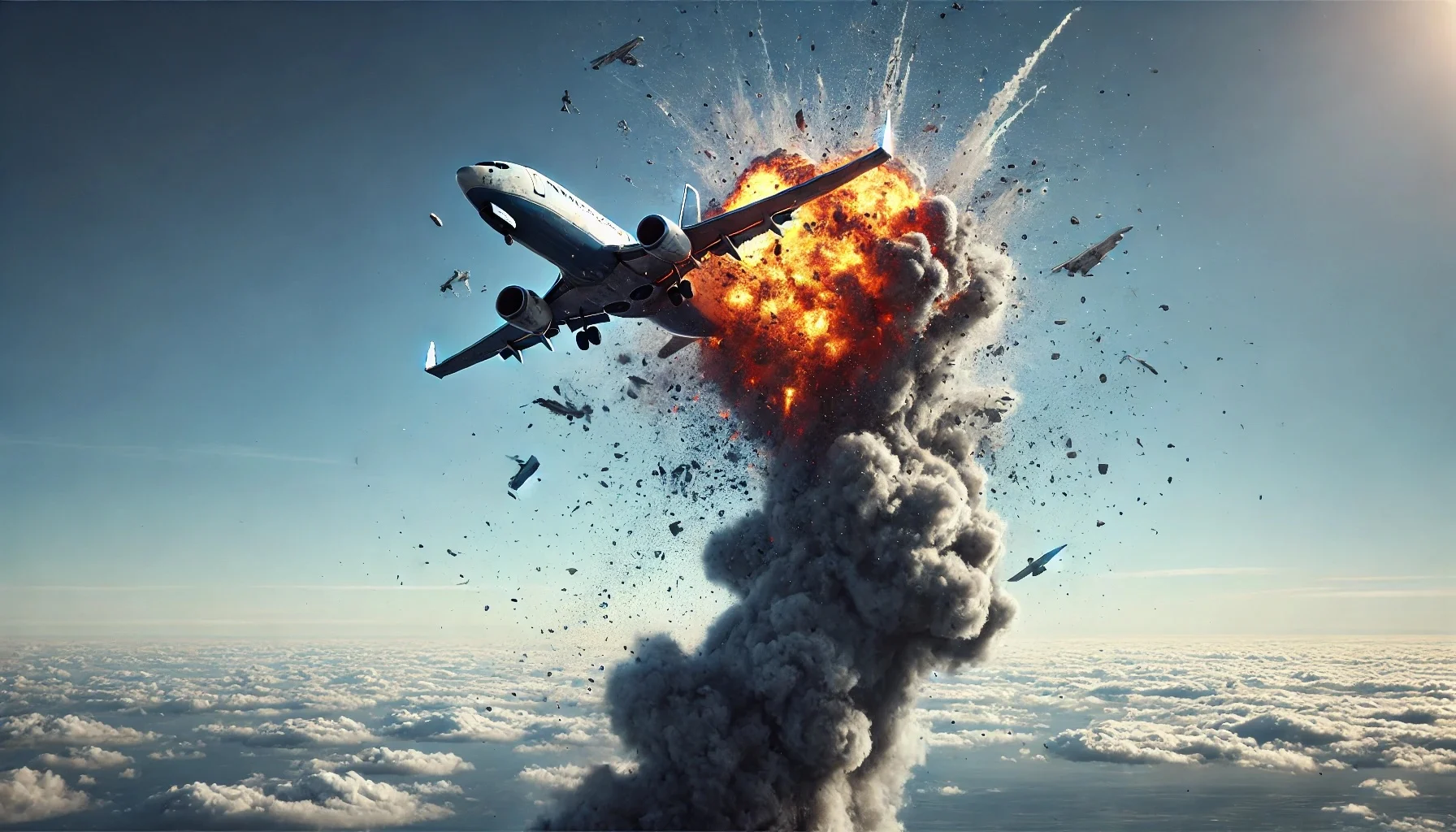
The Collision of Bashkirian Airlines Flight 2937 and DHL Flight 611
By The CC Team
July 1, 2002
A Quiet Night Turned Tragic
On the night of July 1, 2002, the skies over southern Germany were calm. As dusk settled, Bashkirian Airlines Flight 2937, a charter flight carrying 60 passengers, mostly schoolchildren from Bashkortostan, Russia, was en route from Moscow to Barcelona. The plane, a Tupolev Tu-154M, cruised steadily at 36,000 feet. At the same time, DHL Flight 611, a Boeing 757 cargo plane with two crew members, was making its way from Bahrain to Brussels.
The Overlooked Danger
Swiss air traffic control, managed by Skyguide, was responsible for the airspace that night. Due to a radar system update, only one air traffic controller, Peter Nielsen, was actively managing the airspace, while another controller was on a break. As the two planes approached the same altitude near Lake Constance, Nielsen noticed they were on a collision course. At 23:34, he instructed Bashkirian Airlines Flight 2937 to descend to 36,000 feet.
A Fatal Miscommunication
Unknown to Nielsen, the onboard Traffic Collision Avoidance System (TCAS) on both aircraft had activated. TCAS on DHL Flight 611 directed a climb, while TCAS on Bashkirian Airlines Flight 2937 instructed a descent. Despite TCAS warnings, the Bashkirian Airlines crew, adhering to the controller’s instructions, began descending. At 23:35:56, the tail of the DHL Boeing 757 sliced through the fuselage of the Tupolev Tu-154M. The collision at approximately 35,400 feet caused both aircraft to disintegrate mid-air.
The Immediate Aftermath
The wreckage from both planes rained down over the countryside near Überlingen. Rescue operations began immediately, but the scene was one of devastation. There were no survivors among the 71 people aboard both planes. Bodies and debris were scattered across a wide area, emphasizing the horrific nature of the disaster.
Investigation and Findings
The German Federal Bureau of Aircraft Accident Investigation (BFU) conducted a comprehensive investigation. The findings revealed a series of failures. The reliance on a single air traffic controller, technical limitations in radar and communication systems, and the critical miscommunication between TCAS and air traffic control instructions all contributed to the tragedy. These revelations highlighted severe flaws in air traffic management.
The Human Toll and Legal Repercussions
The emotional impact of the tragedy was profound. Vitaly Kaloyev, a father who lost his entire family in the collision, later confronted and killed Peter Nielsen in 2004. Kaloyev was convicted but received a reduced sentence due to his emotional distress. The incident led to legal scrutiny of Skyguide and its personnel, resulting in fines and changes in procedures.
Implementing Change
In the wake of the disaster, significant changes were implemented. Air traffic control protocols were enhanced to prevent reliance on a single controller. Communication systems were upgraded to ensure better coordination, and TCAS instructions were given priority over air traffic control commands in conflict scenarios. These changes aimed to prevent such a tragedy from occurring again.
A Lasting Legacy
The collision of Bashkirian Airlines Flight 2937 and DHL Flight 611 remains a significant case study in aviation safety and crisis management. It underscores the importance of vigilant air traffic control, robust communication systems, and strict adherence to safety protocols. The lessons learned from this tragic event continue to influence aviation policies and procedures globally.
Honoring the Victims
Memorials have been established in Germany and Russia to honor the victims. These sites serve as poignant reminders of the lives lost and the importance of ongoing improvements in aviation safety. The memory of the 71 people who perished in the collision is preserved through these tributes, ensuring that their legacy informs future generations.
Ongoing Improvements
The aftermath of the collision spurred ongoing advancements in air traffic control technology and international cooperation. The aviation industry has made significant strides in standardizing safety practices, enhancing training for controllers, and developing more sophisticated collision avoidance systems. These efforts aim to ensure that the skies remain safe for all who travel.